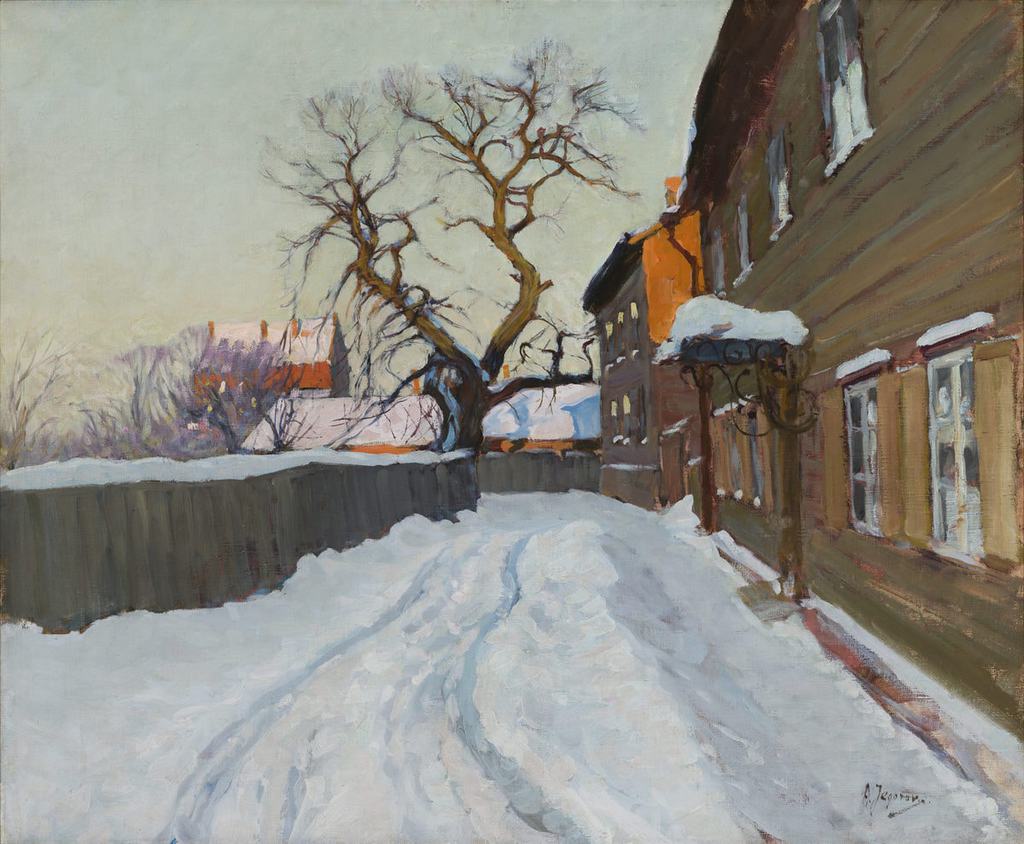
The main character of this painting is light. The walls of the houses are like a particular kind of screen onto which the rays of the setting – or rising – sun fall, colouring the dark brown boards of the façade orange. Such a depiction of sunlight, not directly, but rather leaving the sun concealed beyond the edge of the canvas and showing its presence through reflection, has captivated other painters as well, since it provides the opportunity to mix together realistic and dreamy treatments of colour. On the one hand we see houses in their ordinary still-life, yet the setting of the sun unexpectedly adds radiance, lustre and glimmers to them. Bringing sunshine into a slum scene can also contain certain social meanings, speaking of hope and a better future in a relatively poor environment. As a masterful painter of snow, Jegorov has also depicted snow here, taking particular care in conveying shadows and shades. A leafless tree emerges as a third element (compare this with Peet Aren’s winter landscape), towards which the viewer’s gaze is directed along a corridor, the sides of which are formed by board fencing on the one side and houses on the other side. The dramatically towering leafless tree adds tension to the composition and creates something like complicated ornamentation on the background of the empty sky, for which reason it is also no wonder why the artist has painted not only the general form of the tree in such careful detail, but also its smaller branches and twigs.